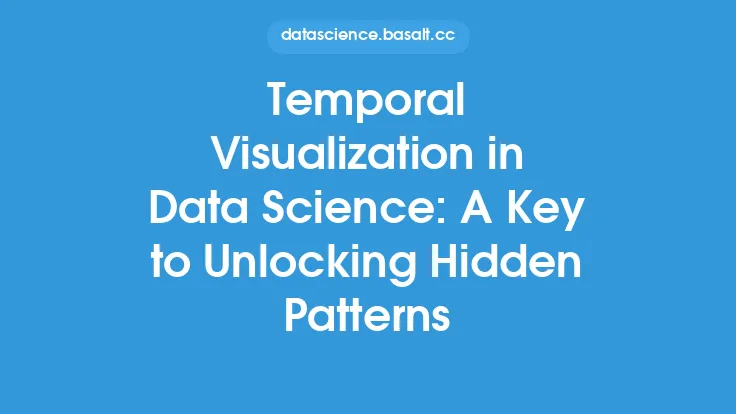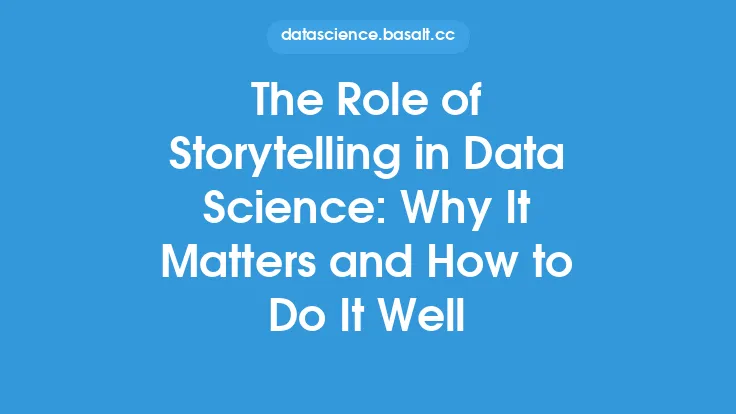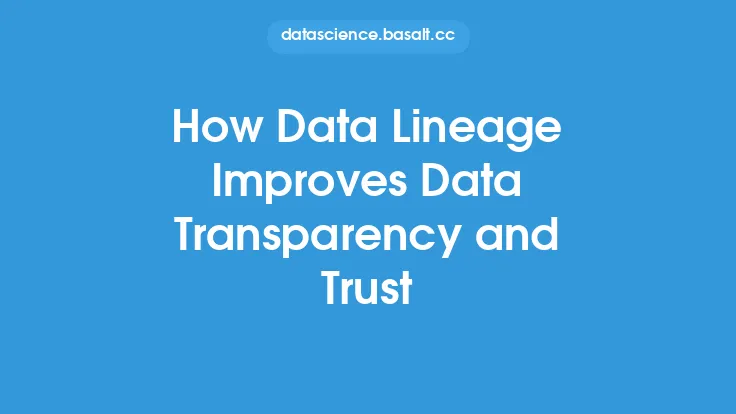Data provenance is a critical aspect of data science that refers to the documentation and tracking of the origin, processing, and evolution of data throughout its lifecycle. It is essential for ensuring transparency, trust, and reproducibility in data-driven research and applications. In this article, we will delve into the concept of data provenance, its importance, and its applications in data science.
Introduction to Data Provenance
Data provenance involves capturing and recording metadata about the data, such as its source, processing history, and transformations applied to it. This metadata provides a clear audit trail of the data's journey, enabling users to understand how the data was generated, processed, and transformed. Data provenance is not limited to the data itself but also includes information about the algorithms, models, and software used to process and analyze the data.
Types of Data Provenance
There are two primary types of data provenance: prospective and retrospective. Prospective provenance involves capturing metadata as the data is being generated or processed, whereas retrospective provenance involves reconstructing the metadata after the fact. Prospective provenance is generally more accurate and reliable, as it captures the metadata in real-time, whereas retrospective provenance may be subject to errors or omissions.
Data Provenance Models
Several data provenance models have been proposed, including the Open Provenance Model (OPM), the Provenance Aware Service Oriented Architecture (PASOA), and the W3C Provenance Model (PROV). These models provide a framework for representing and exchanging provenance information, enabling interoperability and reuse of provenance data across different systems and applications.
Capturing Data Provenance
Capturing data provenance involves identifying and recording the relevant metadata, such as the data source, processing steps, and transformations applied to the data. This can be achieved through various techniques, including logging, auditing, and metadata extraction. Logging involves recording events and activities related to the data, such as data ingestion, processing, and storage. Auditing involves reviewing and verifying the logged events to ensure accuracy and completeness. Metadata extraction involves automatically extracting metadata from the data itself, such as file headers, footers, and other embedded information.
Data Provenance in Data Pipelines
Data pipelines are a critical component of data science, involving the extraction, transformation, and loading of data from various sources. Data provenance plays a vital role in data pipelines, enabling the tracking and tracing of data as it flows through the pipeline. This involves capturing metadata about each processing step, such as data cleaning, feature engineering, and model training. By capturing data provenance in data pipelines, users can identify errors, inconsistencies, and biases in the data, ensuring that the output is accurate, reliable, and trustworthy.
Data Provenance and Reproducibility
Reproducibility is a critical aspect of data science, involving the ability to reproduce results and findings. Data provenance is essential for reproducibility, as it provides a clear audit trail of the data's journey, enabling users to understand how the results were generated. By capturing data provenance, users can reproduce the results, identify errors or inconsistencies, and build upon existing research.
Data Provenance and Transparency
Transparency is a critical aspect of data science, involving the ability to understand how data-driven decisions are made. Data provenance is essential for transparency, as it provides a clear understanding of the data's origin, processing, and evolution. By capturing data provenance, users can understand how the data was generated, processed, and transformed, enabling them to make informed decisions.
Data Provenance and Trust
Trust is a critical aspect of data science, involving the ability to rely on the accuracy and reliability of the data. Data provenance is essential for trust, as it provides a clear audit trail of the data's journey, enabling users to understand how the data was generated, processed, and transformed. By capturing data provenance, users can build trust in the data, ensuring that it is accurate, reliable, and trustworthy.
Challenges and Limitations
While data provenance is a critical aspect of data science, there are several challenges and limitations associated with its implementation. These include the complexity of capturing and representing provenance information, the need for standardized provenance models and formats, and the requirement for significant storage and computational resources. Additionally, data provenance may be subject to errors, omissions, or tampering, which can compromise its accuracy and reliability.
Conclusion
Data provenance is a critical aspect of data science, involving the documentation and tracking of the origin, processing, and evolution of data throughout its lifecycle. It is essential for ensuring transparency, trust, and reproducibility in data-driven research and applications. By capturing data provenance, users can understand how the data was generated, processed, and transformed, enabling them to make informed decisions and build trust in the data. While there are several challenges and limitations associated with data provenance, its importance and benefits make it a vital component of data science.





